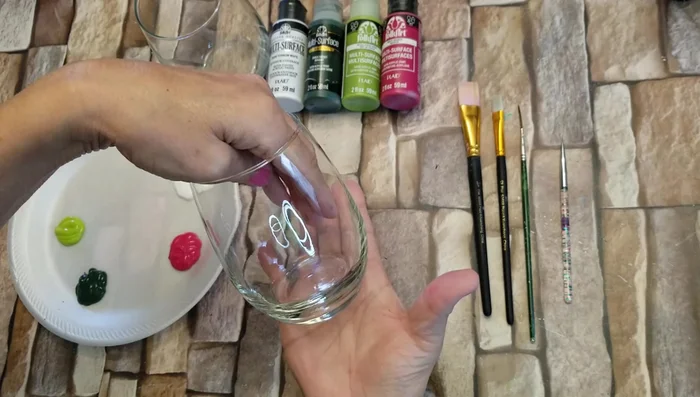Unleash your inner artist and transform ordinary stemless wine glasses into breathtaking floral masterpieces! This tutorial will guide you through the process of creating a stunning rose painting on a stemless wine glass, adding a touch of elegance and personalized charm to your home décor or creating a unique, handmade gift. Forget expensive, store-bought decorations; with a few simple supplies and a little patience, you can achieve professional-looking results that will impress even the most discerning art enthusiast. Imagine the vibrant hues of a blooming rose delicately painted onto the smooth curve of the glass, catching the light with every subtle turn.
This project is perfect for both beginners and experienced painters, offering a fun and rewarding experience. We'll cover everything from preparing your surface and choosing the right paints to mastering the techniques for creating realistic rose petals and leaves. Ready to get started and create your own exquisite rose-painted wine glass? Let's dive into the step-by-step process!
Preparation and Safety Guidelines
- FolkArt multi-surface paints (magenta, citrus green, thicket, titanium white)
- Glass painting brushes (3/4 inch flat, #12 flat, #2 long, detail brush)
- Rubbing alcohol
- Cotton ball/tissue
- Towel/paper towel
- Water
- Stemless wine glasses
- Always work in a well-ventilated area. Acrylic paints, while generally low-odor, can still release fumes.
- Protect your work surface. Use a drop cloth or newspaper to prevent paint spills and stains.
- Clean brushes thoroughly after each use with soap and water to prevent paint from hardening and ruining your brushes.
Step-by-Step Instructions
Prepare the Glass
- Clean the glass surface with rubbing alcohol to remove oils and residue.

Prepare the Glass Paint the First Rose Layer
- Double load a 3/4 inch flat brush with titanium white and magenta (more magenta than white).
- white on the outside, magenta on the inside. Apply generously.


Paint the First Rose Layer Add Rose Buds
- Add rose buds using an upside-down U shape with white paint on top, followed by magenta.

Add Rose Buds Paint the Rose Centers
- Paint the inside cup of the large roses using an upside-down U shape, holding the brush perpendicular to the glass.

Paint the Rose Centers Complete the Roses
- Finish the roses by pulling down and out, cutting around towards the middle with gentle pressure. Use the white edge of the brush for a C-stroke.
- Add small strokes using the edge of the brush to create texture.


Complete the Roses Add Stems
- Create stems using a #2 long brush and Thicket paint, slightly wetting the brush for better transparency. Don't make them perfectly straight.

Add Stems Add Leaves
- Add leaves using a #12 flat brush, double loading with thicket and citrus green (plus white for the citrus green side). Use a sideways push, lift and pull motion.

Add Leaves Add Rose Centers & Details
- Add dots to the centers of the roses and buds using a detail brush or the back of another brush with citrus green and white.

Add Rose Centers & Details Add Base Leaf Strokes
- Finish by adding leaf strokes to the base of the roses using a #5 flat brush double loaded with citrus green, thicket and white.

Add Base Leaf Strokes
Read more: DIY: Create Custom Canister Labels with Silhouette Cameo
Tips
- Use plenty of paint, especially on glass.
- Don't paint all the way to the rim of the glass, leave about an inch and a half.
- Don't press too hard when painting, to avoid pulling the paint underneath.
- Allow each coat to dry before applying another.
- Practice your strokes on paper before painting on the glass.










